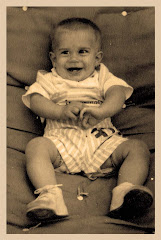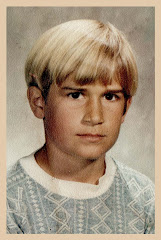
Since closing my business and reentering the 9 to 5, I’ve had very little time for creative pursuits. I’ve been a little like a fish out of water, gulping air, hoping to run some creative fluids past my gills. Creatively speaking, it’s been the driest period in my life, except for designing several logos recently. So that’s what I’ll write about today--creating logos.
Interestingly, the word logos itself is a Greek word referencing Divine creativity, power and reason. Some cultures refer to it as Naad, Dabar, The Word, or equivalent of the Big Bang. While our use of the word "logos" is none so lofty, I find the linguistic tie to the creative process interesting.
Some logos involve nothing more than choosing a font, but we are going to stretch a bit farther than that. However, to successfully do so we must descend into realms of consciousness where primal images communicate universal concepts. For example, if you look at the crafting of signs denoting gender on restroom doors you begin to understand communication that transcends language. The primal language of rudimentary forms seems innate to the human psyche. Indeed, the brain itself creates a mental kanji of sorts to abstractly represent known realities. For example, take a moment and close your eyes. Now think about the first house that you can remember living in as a child. Notice the abstract icon that your mind created to represent this structure, feeling, and memory. The initial mental impression doesn’t contain the entire layout of the house in detail, just an abstract impression.
When crafting a good logo and artist must descend into this realm of primal impressions. Seeded with the concepts which one desires to communicate, the mind will begin flashing through image icons and mental thumbnails to begin drafting possible representations.
As these images and impressions are transferred to paper, an intellectual process begins which calls upon one’s creative skills in distilling a singular image which is aesthetically pleasing, striking, and communicative.
Obviously, not all logos reach this high benchmark, and there are many other considerations which intermingle in the equation. For example, one must become familiar with established symbolism, calligraphy, geometric forces, image reduction, mental cropping, and aesthetics of composition like shape, perspective, balance, and unity. Nevertheless, I find descending into deeper realms of consciousness crucial to the creative process. Moreover, the more familiar one becomes with this process, the more they can branch out into conceptual art work, which is not and easy genre to master.
Aesthetics involve everything from the subliminal to the intellectual. Yet articulating why we like a work of art is often hard to do. Truth be told, most artists want a visceral response. All of their effort is aimed at soliciting three simple words from their audience, “I like it!”




















